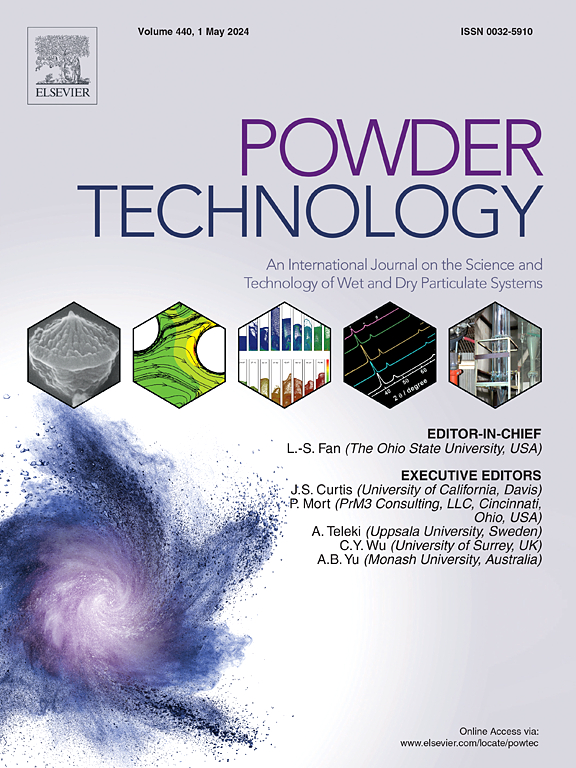Numerical investigation of morphological effects on crushing characteristics of single calcareous sand particle by finite-discrete element method
IF 4.5
2区 工程技术
Q2 ENGINEERING, CHEMICAL
引用次数: 0
Abstract
Morphological effects on crushing characteristics of single calcareous sand particle were investigated using finite-discrete element method. Numerical particles were generated by spherical harmonics with tuned parameters. Exterior and interior morphological parameters were thereby controllable in particle set and retained the nature of real particles. Brazilian, multi-plane and progressive failure modes were identified and primarily regulated by flatness and elongation. Crushing strength was positively correlated with flatness, elongation and sphericity, and negatively with convexity. These observations were consistent between simulation and laboratory test, but much better identified from simulation, due to the decoupling of different morphological effects. With increasing intraparticle porosity, crushing strength was significantly reduced, while the Weibull modulus dropped first and rebounded afterwards, implying the interplay between the effects of interior and exterior morphologies. Intraparticle pore size distribution scarcely affected crushing strength, since large pores take the fundamental role but tiny pores take over main difference among distributions.

求助全文
约1分钟内获得全文
求助全文
来源期刊

Powder Technology
工程技术-工程:化工
CiteScore
9.90
自引率
15.40%
发文量
1047
审稿时长
46 days
期刊介绍:
Powder Technology is an International Journal on the Science and Technology of Wet and Dry Particulate Systems. Powder Technology publishes papers on all aspects of the formation of particles and their characterisation and on the study of systems containing particulate solids. No limitation is imposed on the size of the particles, which may range from nanometre scale, as in pigments or aerosols, to that of mined or quarried materials. The following list of topics is not intended to be comprehensive, but rather to indicate typical subjects which fall within the scope of the journal's interests:
Formation and synthesis of particles by precipitation and other methods.
Modification of particles by agglomeration, coating, comminution and attrition.
Characterisation of the size, shape, surface area, pore structure and strength of particles and agglomerates (including the origins and effects of inter particle forces).
Packing, failure, flow and permeability of assemblies of particles.
Particle-particle interactions and suspension rheology.
Handling and processing operations such as slurry flow, fluidization, pneumatic conveying.
Interactions between particles and their environment, including delivery of particulate products to the body.
Applications of particle technology in production of pharmaceuticals, chemicals, foods, pigments, structural, and functional materials and in environmental and energy related matters.
For materials-oriented contributions we are looking for articles revealing the effect of particle/powder characteristics (size, morphology and composition, in that order) on material performance or functionality and, ideally, comparison to any industrial standard.
 求助内容:
求助内容: 应助结果提醒方式:
应助结果提醒方式:


